Oceana Shines Light on Possible Illegal Fishing and Human Rights Abuses at Sea
Press Release Date: June 13, 2019
Location: Washington
Contact:
Megan Jordan | email: mjordan@oceana.org | tel: 202.868.4061
Today, Oceana published an investigative report demonstrating the power of technology to shine a light on possible illegal fishing and human rights abuses at sea.
Oceana used the Global Fishing Watch mapping platform – a tool that empowers anyone in the world with an internet connection to investigate global fishing* activity in near real-time, for free – to analyze the activities of vessels with histories of possible illegal, unreported and unregulated (IUU) fishing, forced labor or human trafficking.
Oceana found that certain behaviors can be associated with a higher risk of IUU fishing and human rights abuses, including:
- AIS Avoidance: A South Korean-flagged fishing vessel, which has a known history of illegal fishing and involvement in human rights abuse cases, appeared to repeatedly stop transmitting its public tracking data, called Automatic Identification System (AIS). Oceana detected 77 gaps in AIS transmissions by the vessel along Argentina’s waters over a nearly five-year period, including four inside its national waters. One gap lasted almost 12 days, ending when the Argentine Coast Guard captured the vessel for fishing illegally inside Argentina’s waters.
- Extended Time at Sea: A Taiwanese-flagged fishing vessel, where an alleged victim of human trafficking died during a 2011 voyage, remained at sea for an extended period of as much as 20 months from 2015 through 2017 while fishing in the South Atlantic Ocean.
- Port Avoidance: A refrigerated cargo vessel was previously identified by the Indonesian government for its association with human trafficking, and in 2017, conducted an illegal transshipment off the coast of Somalia. Subsequently, the vessel moved from port-to-port in an apparent effort to unload its catch and avoid sanctions after several governments shared information about IUU fishing.
“Increased transparency of commercial fishing can help save the oceans,” said Beth Lowell, deputy vice president at Oceana. “Illegal fishers and human traffickers can no longer hide beyond the horizon. Tools like Global Fishing Watch allow Oceana and others to identify suspicious patterns and flag higher risk behaviors for further investigation. Fisheries managers must expand transparency of commercial fishing to deter illegal fishing and other criminal activities at sea.”
Poor oversight, weak international laws and lack of transparency make commercial fishing a vulnerable sector for illicit activity, including IUU fishing, human trafficking and forced labor. These case studies show that vessels with histories of non-compliance can exhibit potentially suspicious patterns of behavior like evading public tracking systems, remaining at sea for extended periods of time, and avoiding ports known to enforce regulations. Identifying these behaviors is the first step to highlight vessels that may be at a higher risk of engaging in similar activities.
Oceana is working to help stop illegal fishing, increase transparency at sea, and require traceability of all seafood.
To read the full report, visit usa.oceana.org/IllegalActivitiesAtSea.
Oceana thanks Liberty Shared for their collaboration in this report, including their in-depth knowledge of transnational human trafficking. Read their related blog post here.
*Any and all references to “fishing” should be understood in the context of Global Fishing Watch’s fishing detection algorithm, which is a best effort to determine “apparent fishing effort” based on vessel speed and direction data from the Automatic Identification System (AIS) collected via satellites and terrestrial receivers. As AIS data varies in completeness, accuracy and quality, it is possible that some fishing effort is not identified and conversely, that some fishing effort identified is not fishing. For these reasons, Global Fishing Watch qualifies all designations of vessel fishing effort, including synonyms of the term “fishing effort,” such as “fishing” or “fishing activity,” as “apparent,” rather than certain. Any/all Global Fishing Watch information about “apparent fishing effort” should be considered an estimate and must be relied upon solely at your own risk. Global Fishing Watch is taking steps to make sure fishing effort designations are as accurate as possible.



